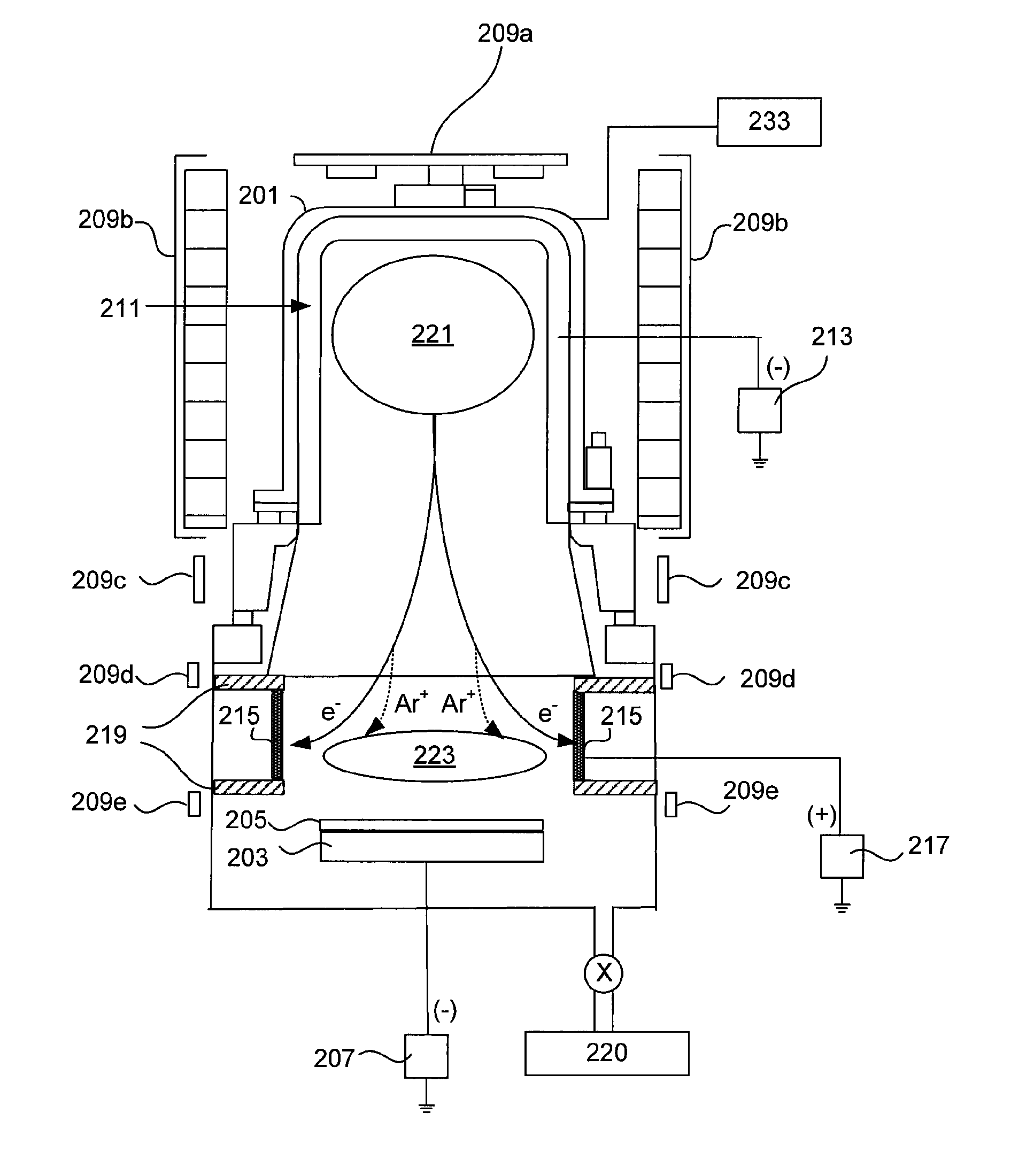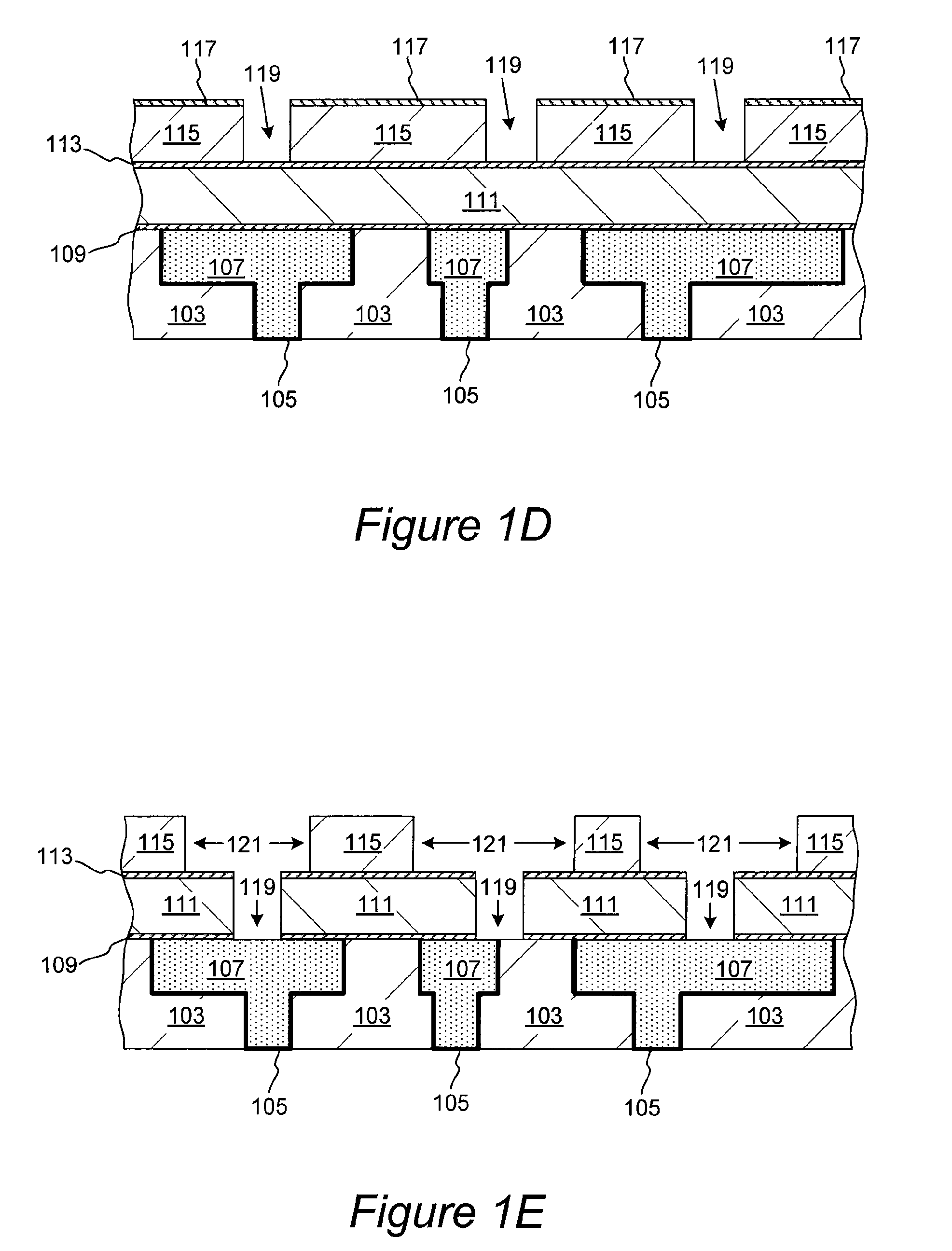Method and apparatus for increasing local plasma density in magnetically confined plasma
a magnetically confined plasma and density technology, applied in vacuum evaporation coatings, electric discharge tubes, coatings, etc., can solve the problems of easy damage to exposed dielectric materials, microtrenching damage, and difficult to perform resputtering without exposing dielectric layers to plasma, so as to reduce the reliability of formed ic devices, reduce the adhesion of subsequently deposited layers, and easy to become damaged
- Summary
- Abstract
- Description
- Claims
- Application Information
AI Technical Summary
Benefits of technology
Problems solved by technology
Method used
Image
Examples
Embodiment Construction
Introduction and Terminology
[0034]As mentioned, methods and apparatus for increasing local plasma density (e.g., plasma density proximate the substrate in a process chamber) are herein provided. The methods can be used, for example, in PVD and plasma pre-clean reactors that have at least one region of magnetically confined or shaped plasma. A greater than about two-fold, a five-fold and, in some embodiments, a ten-fold increase in local plasma density can be achieved by implementing provided methods. In some embodiments, provided methods are used to generate a high density plasma (e.g., a plasma having a density of at least about 1011 electrons / cm3, preferably at least about 1012 electrons / cm3 and in some cases at least about 1013 electrons / cm3) proximate the semiconductor wafer substrate, however the methods are not limited that way. For example, medium and low density plasmas may also be formed by increasing the density of even lower density plasmas.
[0035]Provided methods also inc...
PUM
| Property | Measurement | Unit |
|---|---|---|
| mean energy | aaaaa | aaaaa |
| mean energy | aaaaa | aaaaa |
| mean energy | aaaaa | aaaaa |
Abstract
Description
Claims
Application Information
 Login to View More
Login to View More - R&D
- Intellectual Property
- Life Sciences
- Materials
- Tech Scout
- Unparalleled Data Quality
- Higher Quality Content
- 60% Fewer Hallucinations
Browse by: Latest US Patents, China's latest patents, Technical Efficacy Thesaurus, Application Domain, Technology Topic, Popular Technical Reports.
© 2025 PatSnap. All rights reserved.Legal|Privacy policy|Modern Slavery Act Transparency Statement|Sitemap|About US| Contact US: help@patsnap.com



